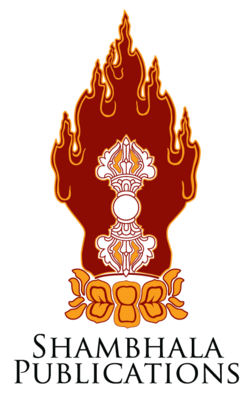Category:Shambhala Publications
Shambhala Publications
As in our earliest days, we continue to be very selective about what we publish. Authenticity and integrity are paramount. And we aim for each of our books and programs to shine through with genuine personal value. We offer numerous titles on meditation and a wide range of spiritual traditions, from Buddhism and Taoism to contemplative traditions within Christianity, Judaism, Hinduism, and Sufism. Sometimes the focus is more physical, with our books on health, wellness, yoga, and martial arts. And often it is simply about day-to-day happiness, with books on psychology, emotional well-being, and mindfulness.
This definitive composition of Mahāyāna teachings was imparted in the fourth century by Maitreya to the famous adept Asanga, one of the most prolific writers of Buddhist treatises in history. Asanga’s work, which is among the famous Five Treatises of Maitreya, has been studied, commented upon, and taught by Buddhists throughout Asia ever since it was composed.
In the early twentieth century, one of Tibet’s greatest scholars and saints, Jamgön Mipham, wrote A Feast of the Nectar of the Supreme Vehicle, which is a detailed explanation of every verse. This commentary has since been used as the primary blueprint for Tibetan Buddhists to illuminate the depth and brilliance of Maitreya’s pith teachings. The Padmakara Translation Group has provided yet another accessible and eloquent translation, ensuring that English-speaking students of Mahāyāna will be able to study this foundational Buddhist text for generations to come. (Source: Shambhala Publications)This first part of the Trilogy of Rest sets the foundation for the following two volumes: Finding Rest in Meditation, which focuses on Tibetan Buddhist meditation practice, and Finding Rest in Illusion, which focuses on post-meditation yogic conduct. The Padmakara Translation Group has provided us with a clear and fluid new translation to Finding Rest in the Nature of the Mind along with selections from its autocommentary, The Great Chariot, which will serve as a genuine aid to study and meditation.
Here, we find essential instructions on the need to turn away from materialism, how to find a qualified guide, how to develop boundless compassion for all beings, along with the view of tantra and associated meditation techniques. The work culminates with pointing out the result of practice as presented from the Dzogchen perspective, providing us with all the tools necessary to traverse the Tibetan Buddhist path of finding rest.
Shambhala PublicationsLion of Speech: The Life of Mipham Rinpoche offers a translation of Dilgo Khyentse Rinpoche’s biography of Mipham Rinpoche, left behind in Tibet when Khyentse Rinpoche went into exile in 1959 and lost for eighty years before its discovery by an extraordinary stroke of good fortune. The biography is written as a traditional namthar, an account of the “life and liberation” of a man who is widely considered to be among the greatest scholars and accomplished masters in the history of Tibetan Buddhism. One of the striking features of Khyentse Rinpoche’s account is that it downplays the “miraculous” aspects of Mipham’s life and activities—perhaps as a means of bringing into sharper focus the effect that Mipham had on his contemporaries as a spiritual master, scholar, and teacher.
This one-volume edition contains Thomas Cleary's definitive translation of all thirty-nine books of the sutra, along with an introduction, a glossary, and Cleary's translation of Li Tongxuan's seventh-century guide to the final book, the Gandavyuha, "Entry into the Realm of Reality." (Source: Shambhala Publications)
As Chögyam Trungpa writes in his foreword: "It is in the flow of karma that this book materialized in 1959 on the very eve of the destruction of the spiritual land of Tibet. Professor Guenther was instrumental in making available the only commentary and guide in English to the bodhisattva tradition of Tibet, Japan, and China. The book remains the classic text of all Buddhists."
sGam.po.pa, who lived in the eleventh and twelfth centuries, was the organizer of the Kagyü order of Tibetan Buddhism.
Herbert V. Guenther is Professor Emeritus in the Department of Far Eastern Studies at the University of Saskatchewan.
(Source: back cover)
Pages in category "Shambhala Publications"
The following 7 pages are in this category, out of 7 total.

